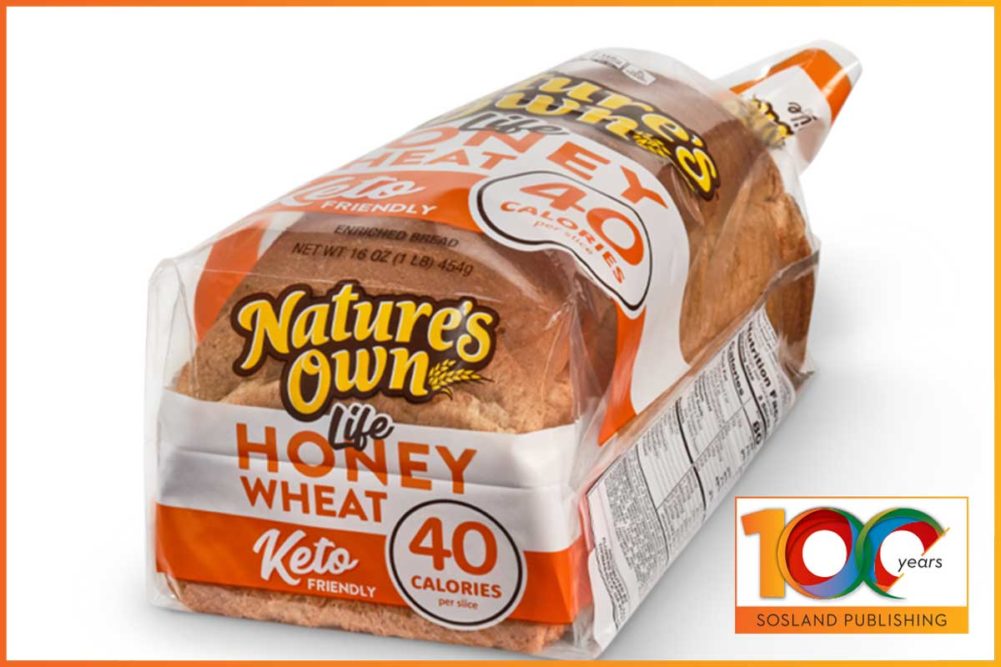Consumer perception of what’s good for them and what’s not fails to line up with what scientists have discovered and what science continues to learn about the place grains and carbohydrates have in the diet. Even now, despite consumers’ renewed interest in baked goods, low-carb persists. In today’s iteration, the baking industry contends with the keto diet and demand for baked goods that deal in net carbs, or those carbohydrates which are digested and used for energy.
While the science around the benefits of whole grains and enriched grains is clear and consistent, the movement toward low-carbohydrate diets has persisted in the collective consumer conscious since the 1960s. Carbohydrates gained a brief respite in the 1980s while fat took a turn at vilification, but in the 1990s, the spotlight turned back toward carbohydrates and simple sugars. Sarah Corwin, PhD, RD, senior principal scientist, plant-based, Ajinomoto Health & Nutrition, who studied carbohydrate chemistry and digestion at Purdue University, attributes this persistent vilification with the growing understanding of macronutrients.
“As the science progressed, we started to understand the caloric distribution of macronutrients,” she said. “That’s when we began to understand that fat is higher in calories than protein, so maybe we should cut down on fat and carbohydrates. Then sugar became the next target because it’s a simple carbohydrate. This also coincided with the observation that with a ketogenic diet, glycogen stored in muscle in more than ten times its weight in water is lost, so the number on the scale goes down. It’s been a long progression of carbohydrates being viewed negatively, and grains are the main source of carbohydrates in the American diet.”
Glenn Gaesser, PhD, professor, College of Health Solutions at Arizona State University, and member of the Grain Foods Foundation Scientific Advisory Board, also pointed to the fixation on dieting and the growing rates of obesity in America. Data from the National Health and Nutrition Examination Survey, 2013-2016, found that 49.1% of US adults tried to lose weight in the past 12 months, while nearly 40% were considered obese. Among the adults who tried to lose weight, exercise and eating less were tied for the top spot with 62.9% of respondents reporting these strategies.
“When you look at diet from the standpoint of how to lose weight, you see a smorgasbord of diets that have vilified carbs, whether it’s low-carb, keto or paleo,” Dr. Gaesser said. “Carbohydrates are the most commonly consumed macronutrient, so for most of the last century, about half the calorie intake for the average American comes from carbs. So if you want to lose weight, you need to cut calories. Carbohydrates are an easy target. It makes sense from this perspective to cut out something that you’re consuming a lot of. However, research shows that in terms of weight loss, it’s the calories not the carbs.”
Dr. Gaesser also pointed to the biology of how carbohydrates are stored in the body as to why people find so much initial success with cutting carbohydrates.
“For every gram of carbohydrate you store in your body, you store almost 3 grams of water with it,” he explained. “So if you lose the carbohydrate, you also lose the water weight. When people go on a carb-free diet, they can drop 5 to 10 lbs within the first week, and they think this is the best diet ever because they’ve never experienced that. The low-carb diet gurus have capitalized on that phenomenon.”
It’s these stories about quick weight loss, Dr. Corwin said, that attract the public more than the science because stories can be so powerful.
“But anecdotes aren’t scientific evidence,” she said. “MSG is a really good example. One person published one article saying they had a headache and a stomachache after eating Chinese food. And that resonated with someone else, and they repeated it over and over again. MSG is also naturally occurring in Italian food in the Parmesan cheese, so why is this phenomenon so specific to Chinese food? Only recently in the last four years has it really come to light that the reason why people thought MSG was bad was xenophobia and a couple of misinformed articles in the 1960s.”
Today, the sexy diet people are hopping on board is the ketogenic diet, which on its own has a long, well-documented history to treat epilepsy. But it has reached the mainstream consumer who may not need this extremely restricted diet to treat anything but a waistline. Dr. Gaesser pointed out that there could be unintended consequences for those who cut carbs without a medical reason to do so, whether that’s epilepsy or celiac disease. Two research papers published in major journals he cited show an association between cutting out gluten and increased risk of diabetes and heart disease.
“If you cut out wheat — Americans’ major source of gluten — you’re cutting out a major source of fiber,” he pointed out. “Studies show that dietary fiber — particularly cereal fiber — is inversely associated with diabetes and heart disease.”
There’s been chatter about the healthfulness of sprouted grains, low-carb breads and long fermentation products like sourdough, but the science is leading to fiber.
“There is really interesting research starting to hit publications around what type of fiber is beneficial, and there is no real research around those other consumer trends,” Dr. Corwin said. “There’s no real research that backs the lasting benefits of probiotics, but there is real research that supports prebiotics and fiber for gut health. I think that’s the future, and hopefully if science drives trends, then the next steps are what are the types of fiber, and that’s how we’ll be designing products and what the consumer will be looking for when it comes to health.”
This article is an excerpt from the May 2022 issue of Baking & Snack. To read the entire feature on Centennial Report: Evolution of Healthy Bread, click here.




